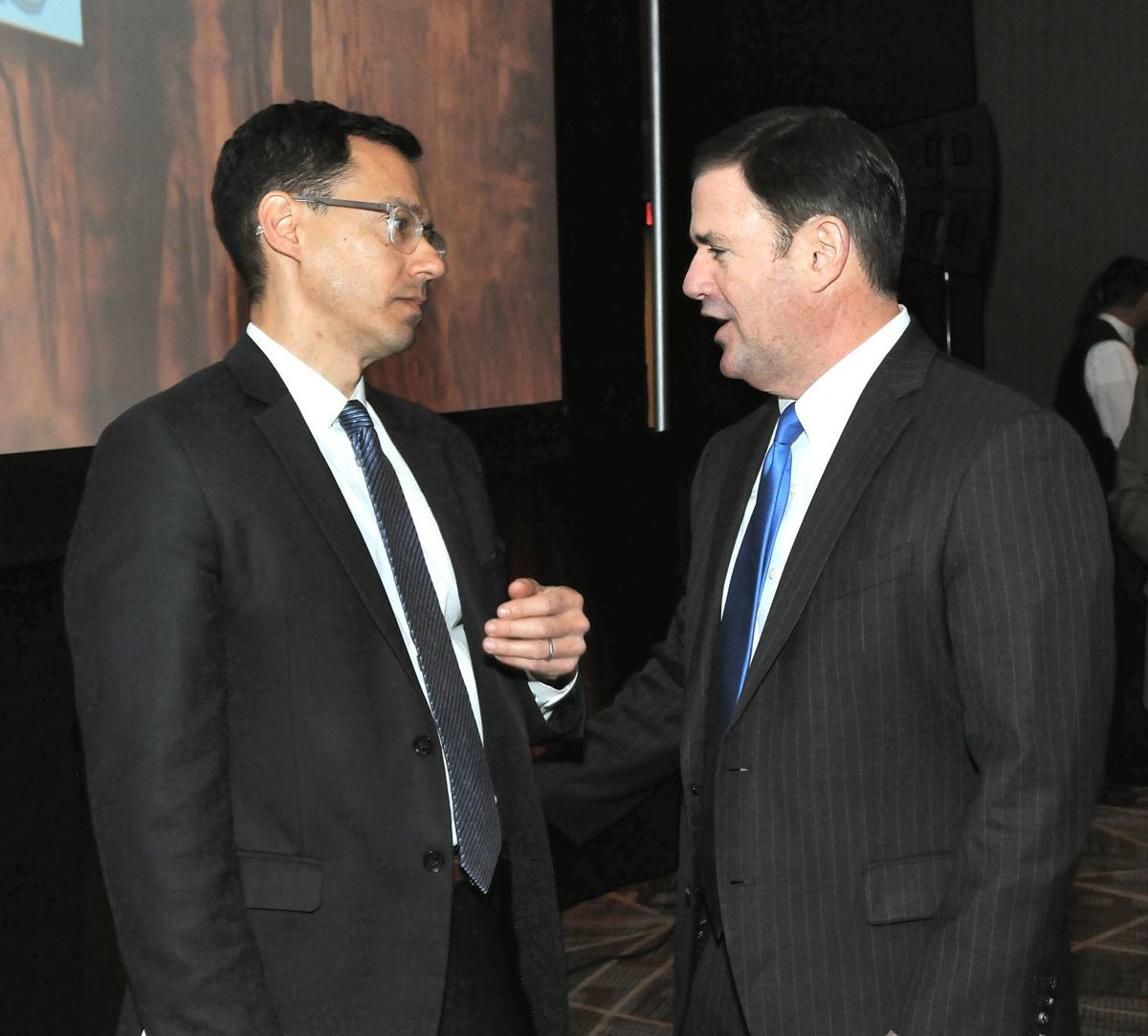PHOENIX — Gov. Doug Ducey wants Congress to bail out the state’s rapidly depleting unemployment trust fund, provide liability protection for businesses, schools and health-care workers, and extend the special federal unemployment benefits — but not necessarily at the same level as now.
The requests come in a letter the governor sent to the state’s two U.S. senators and nine representatives as they weigh what’s being dubbed Phase 4 of the relief package.
Most immediate is the fact that the extra $600 a week being provided by the federal government in jobless benefits expires at the end of July. That would leave those still out of work here with no more than $240 a week in state benefits.
The Tucson Fire Department said multiple agencies were responding to a swift water call along the Rillito River north of Tucson Mall on Thursday morning. The Northwest Fire District and Green Valley Fire District said they were also responding to several swift water rescues. More weather updates: http://tucne.ws/1fgo
Ducey has repeatedly sidestepped the question of raising the state benefits cap, which is the second-lowest in the nation, saying that Arizonans are protected by that extra $600 a week. In his letter, the governor asks Congress to extend what’s called the Federal Pandemic Unemployment Compensation, though he does not say for how long.
Nor is he convinced that $600 is the right number.
“We understand the concerns from businesses that are having difficult rehiring employees when the government pays more in unemployment benefits compared to what they were paying their former employees before the pandemic,” Ducey wrote. So what he wants instead is some sort of cap that would be equal to what they were earning before, but not more than $600.
That mirrors the position of the Arizona Chamber of Commerce and Industry.
“These workers who have lost their job or been furloughed have absolutely no responsibility for their situation,” said Glenn Hamer, the organization’s president. “This is 100% pandemic related.”
But he said the current assistance levels make no sense.
“Somewhere between 50% and two-thirds of the people who receive this $600 ‘top off’ nationwide — I can’t say this is happening in Arizona — are making more than they did while they were employed,” Hamer said. “That has created an issue for certain employers given that some workers can make more not working than being on the job.”
Hamer said it’s not like this is all that out-of-work Arizonans will be getting. He said he expects Congress to repeat its action from earlier this year and send $1,200 checks out to individuals.
It’s not just the federal side of the payments to Arizonans that concerns the governor. There’s the rapidly depleting trust fund that finances those weekly $240-maximum checks from the state.
That fund is fueled by a tax paid by employers on the first $7,000 of each worker’s salary.
The levy on each company depends on how often workers are fired or laid off and end up collecting benefits as well as the average size of the payroll. Rates can be as low as 0.05% and as high as 12.85%.
The fund is designed to be self-correcting to maintain a balance. But the pandemic has changed all that.
Consider: In March, there was $1.12 billion in the fund, a level that had been pretty much steady for years. By last week it had dropped to $686 million.





